
Fauvism - I
Fauvism
Fauvism (/foʊvɪzəm/) is a style of painting and an art movement that emerged in France at the beginning of the 20th century. It was the style of les Fauves (French pronunciation: [le fov], the wild beasts), a group of modern artists whose works emphasized painterly qualities and strong colour over the representational or realistic values retained by Impressionism. While Fauvism as a style began around 1904 and continued beyond 1910, the movement as such lasted only a few years, 1905–1908, and had three exhibitions. The leaders of the movement were André Derain and Henri Matisse.
Besides Matisse and Derain, other artists included Robert Deborne, Albert Marquet, Charles Camoin, Bela Czobel, Louis Valtat, Jean Puy, Maurice de Vlaminck, Henri Manguin, Raoul Dufy, Othon Friesz, Adolphe Wansart, Georges Rouault, Jean Metzinger, Kees van Dongen, Émilie Charmy and Georges Braque (subsequently Picasso's partner in Cubism).
The paintings of the Fauves were characterized by seemingly wild brush work and strident colors, while their subject matter had a high degree of simplification and abstraction. Fauvism can be classified as an extreme development of Van Gogh's Post-Impressionism fused with the pointillism of Seurat and other Neo-Impressionist painters, in particular Paul Signac. Other key influences were Paul Cézanne and Paul Gauguin, whose employment of areas of saturated color—notably in paintings from Tahiti—strongly influenced Derain's work at Collioure in 1905. In 1888 Gauguin had said to Paul Sérusier: "How do you see these trees? They are yellow. So, put in yellow; this shadow, rather blue, paint it with pure ultramarine; these red leaves? Put in vermilion." Fauvism has been compared to Expressionism, both in its use of pure color and unconstrained brushwork. Some of the Fauves were among the first avant-garde artists to collect and study African and Oceanic art, alongside other forms of non-Western and folk art, leading several Fauves toward the development of Cubism.
Henri Matisse
1869 – 1954

Matisse. Self-Portrait in a Striped T-shirt, 1906

Matisse in studio
Henri Émile Benoît Matisse
(French: [ɑ̃ʁi emil bənwa matis]; 31 December 1869 – 3 November 1954) was a French visual artist, known for both his use of colour and his fluid and original draughtsmanship. He was a draughtsman, printmaker, and sculptor, but is known primarily as a painter. Matisse is commonly regarded, along with Pablo Picasso, as one of the artists who best helped to define the revolutionary developments in the visual arts throughout the opening decades of the twentieth century, responsible for significant developments in painting and sculpture.
The intense colourism of the works he painted between 1900 and 1905 brought him notoriety as one of the Fauves (French for "wild beasts"). Many of his finest works were created in the decade or so after 1906, when he developed a rigorous style that emphasised flattened forms and decorative pattern. In 1917, he relocated to a suburb of Nice on the French Riviera, and the more relaxed style of his work during the 1920s gained him critical acclaim as an upholder of the classical tradition in French painting. After 1930, he adopted a bolder simplification of form. When ill health in his final years prevented him from painting, he created an important body of work in the medium of cut paper collage.
His mastery of the expressive language of colour and drawing, displayed in a body of work spanning over a half-century, won him recognition as a leading figure in modern art
Henri Matisse.

Matisse. Gustave Moreau's Studio, 1894-1895

Matisse. Study of a Nude, 1899

Matisse. Woman with a Hat, 1905
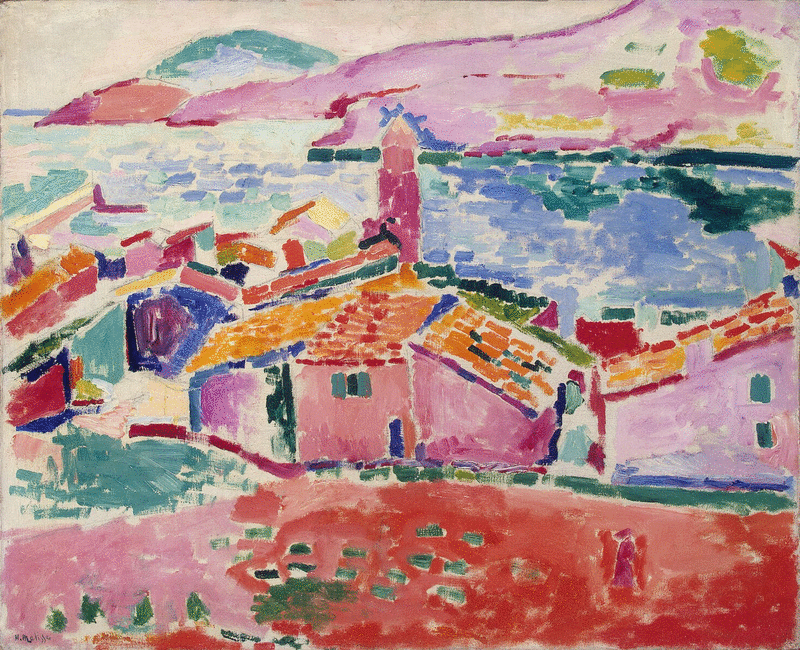
Matisse. Les toits de Collioure, 1905

Matisse. Study of a Nude, 1899

Matisse. Nu (Carmelita), 1904

Matisse. Luxe, Calme et Volupté, 1904
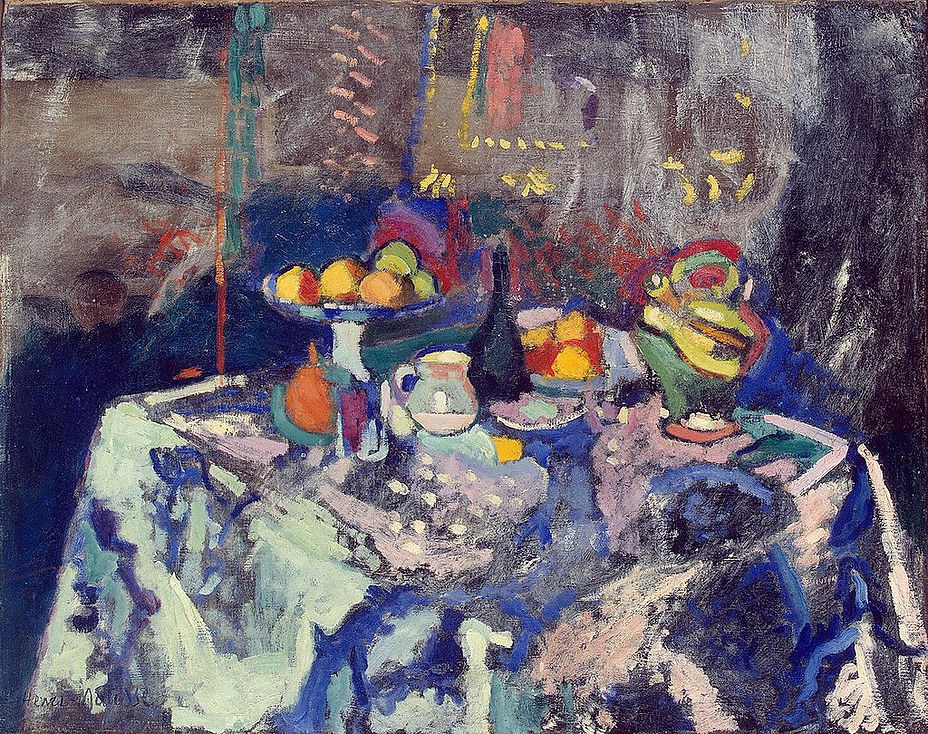
Matisse. ase, Bottle and Fruit, 1906

Matisse. Portrait of Madame Matisse (The green line), 1905

Matisse. Le bonheur de vivre, 1905–6

Matisse. Blue Nude, 1907

Matisse. La coiffure, 1907

Matisse. Le Luxe II, 1907–08

Matisse. Les trois baigneuses (Three Bathers), 1907

Matisse. Bathers with a Turtle, 1908

Matisse. Game of Bowls, 1908

Matisse. La Danse (first version), 1909

Matisse. Still Life with Dance, 1909

Matisse. La Danse (second version), 1910

Matisse. Les Capucines (Nasturtiums with The Dance II), 1910–12

Matisse. Music, 1910

Matisse. L'Atelier Rouge, 1911

Matisse. The Conversation, c.1911

Matisse. Goldfish, 1912

Sleeping nude from the back
Henri Matisse
1927

Painter's Family
Henri Matisse
1911

Nude With Blue Cushion (Nu Au Coussin Bleu)
Henri Matisse

Nude in Front of a Red Background
Henri Matisse
1923

Still Life with a Pewter Jug and Pink Statuette
Henri Matisse
1910
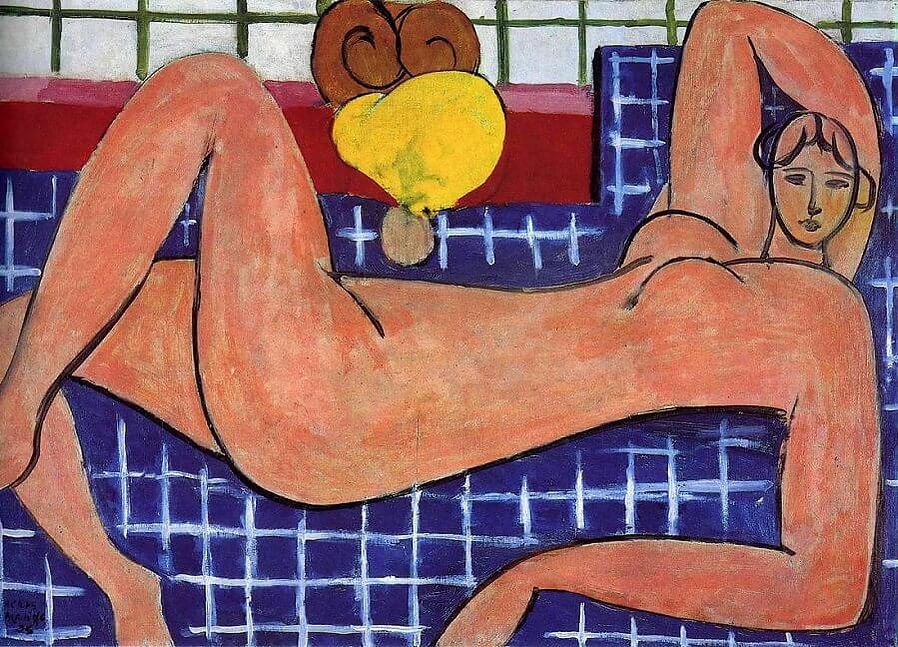
Pink Nude, 1935 by Henri Matisse

Nude with a Scarf
Henri Matisse
1909
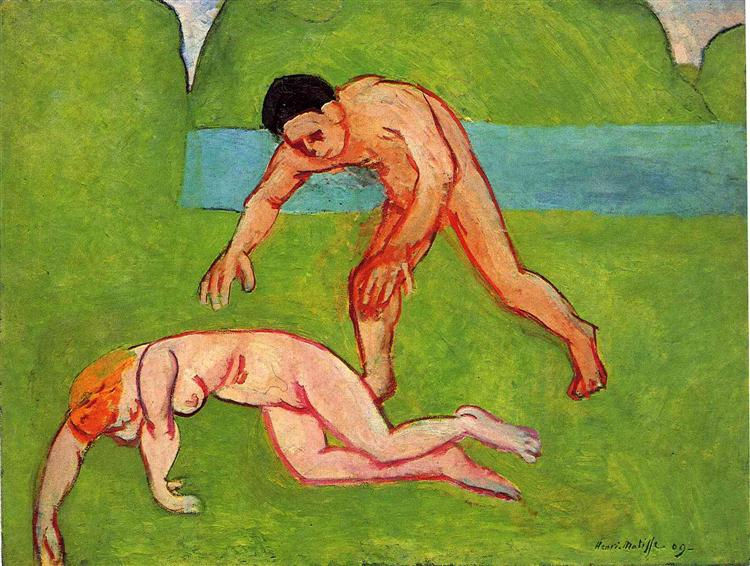
Nymph and Satyr
Henri Matisse
1909

Bathers with a Turtle
Henri Matisse
1908

Seated Woman
Henri Matisse
1908

Nude on a Yellow Sofa 1926 by Henri Matisse

Nude Woman by Henri Matisse 1915

Harmony in Red
Henri Matisse
1908


HENRI MATISSE - JAZZ

Henri Matisse - Jazz

Henri Matisse - Jazz
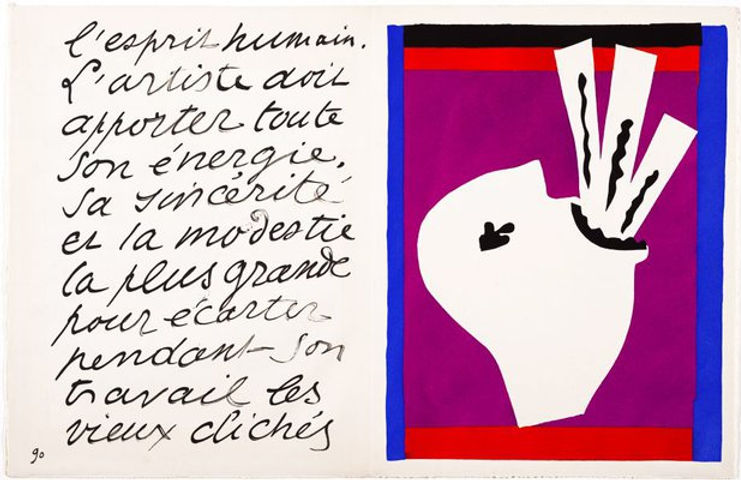
Henri Matisse - Jazz

Henri Matisse - Jazz

Henri Matisse - Jazz

Henri Matisse - Jazz
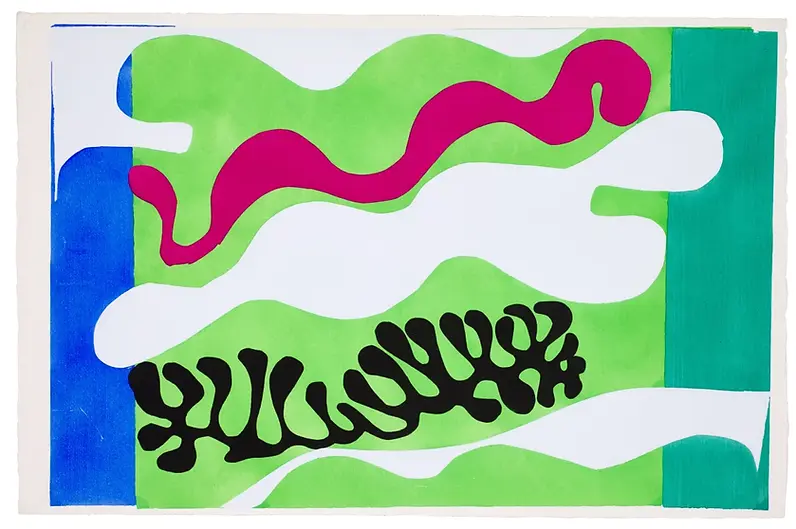
Henri Matisse - Jazz

Henri Matisse - Jazz

Henri Matisse - Jazz
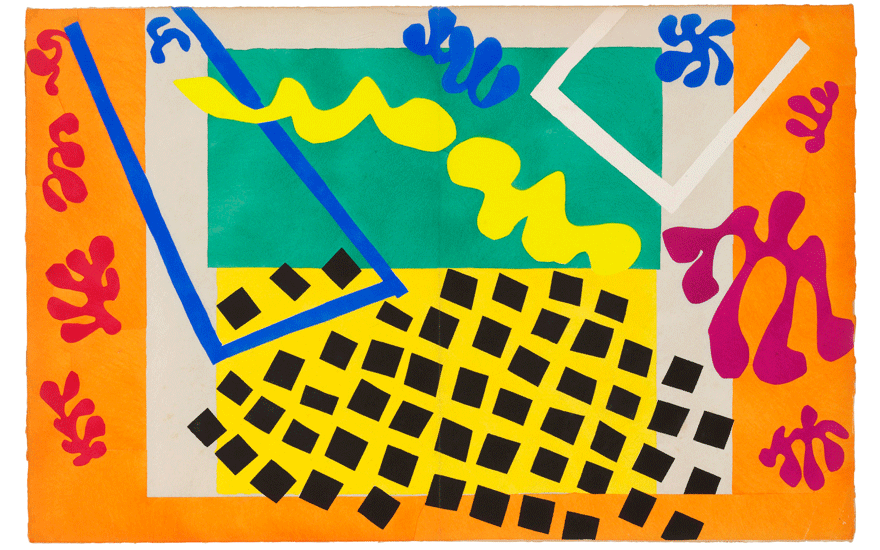
Henri Matisse - Jazz

Henri Matisse - Jazz

Henri Matisse - Jazz

Henri Matisse - Jazz

Matisse at work in his Nice studio

HENRI MATISSE: DANCE 1.1931-1932. Paris. MNAM

HENRI MATISSE: DANCE 1 (CENTER PANEL).
1931-1932. Paris. MNAM

HENRI MATISSE: STUDIES FOR DANCE 1.1931-1932. Nice. Musée Matiss

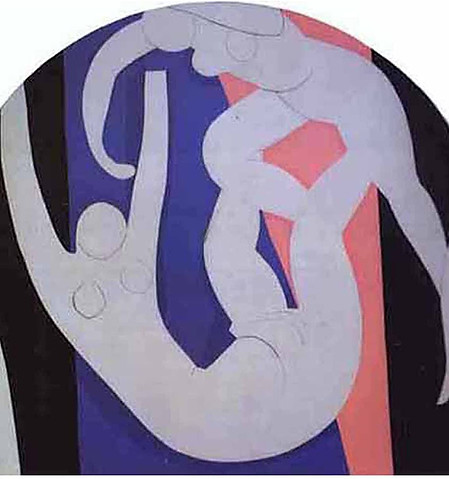
HENRI MATISSE: STUDIES FOR DANCE 1.1931-1932. Nice. Musée Matiss

HENRI MATISSE: STUDIES FOR DANCE 1.1931-1932. Nice. Musée Matiss

HENRI MATISSE:
Blue Nude

HENRI MATISSE:
Blue Nude

HENRI MATISSE:
Blue Nude

HENRI MATISSE:
Blue Nude

HENRI MATISSE:
Blue Nude
Henri Manguin
1874 – 1949

Henri Manguin - Self-portrait
Henri Manguin
Henri Charles Manguin (French: [mɑ̃gɛ̃]; 23 March 1874 – 25 September 1949) was a French painter, associated with the Fauves.
Manguin entered the École des Beaux-Arts to study under Gustave Moreau, as did Henri Matisse and Charles Camoin with whom he became close friends. Like them, Manguin made copies of Renaissance art in the Louvre.
Manguin was greatly influenced by Impressionism, as is seen in his use of bright pastel hues.
He married in 1899 and made numerous portraits of his wife, Jeanne, and their family. In 1902, Manguin had his first exhibition at the Salon des Indépendants and Salon d'Automne. Many of his paintings were of Mediterranean landscapes; and would soon represent the height of his career as a Fauve artist.

Henri Manguin - Bemberg Fondation Toulouse - Le Golfe

Sleeping Child
Henri Manguin
1912

Nude
Henri Manguin
1922

Petite Odalisque
Henri Manguin
1911

Jeanne Au Rocher (Cavalière)
Henri Manguin
1906

La Sieste (le Repos, Jeanne, Le Rocking-chair)
Henri Manguin
1905
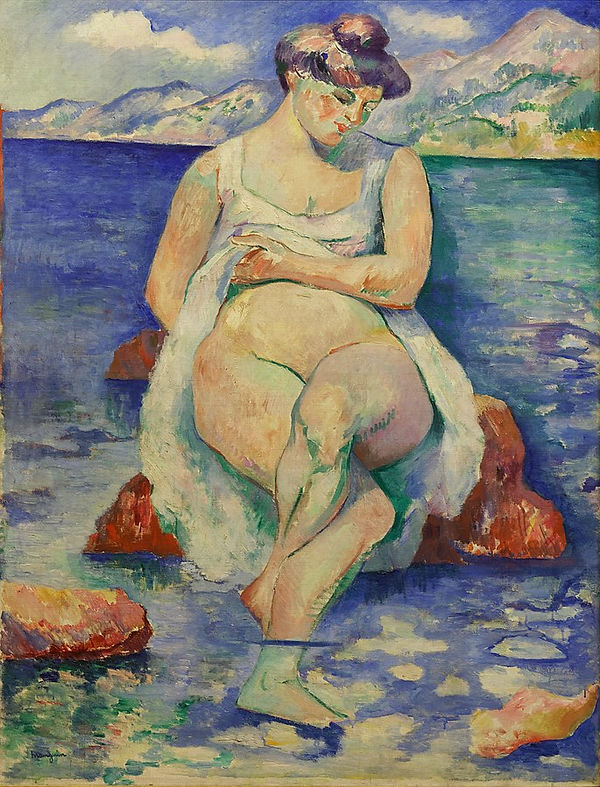
Henri Manguin - La Baigneuse

Henri Manguin, 1906, Baigneuse (Woman Bather)

Saint-Tropez, Sunset
Henri Manguin
1904

Les oliviers à Cavalière
(The olive trees in Cavalière)
Henri Charles Manguin
1906

La pinède à Cavalière
(The pine forest in Cavalière)
Henri Charles Manguin
1906

Devant la fenêtre, rue Boursault
(In front of the window, rue Boursault)
Henri Charles Manguin
1904

Frauenakt im Atelier
(Female nude in studio)
Henri Charles Manguin
1903
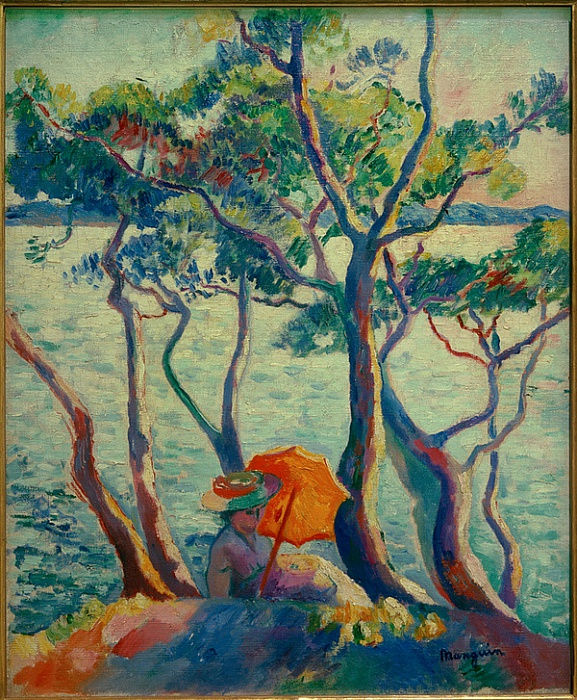
Jeanne à l’ombrelle, Cavalière
(Jeanne à l'ombrelle, Cavalier)
Henri Charles Manguin
1906

Nu à l’Ottomane
(Nude in the Ottoman style)
Henri Charles Manguin
1908

Nude Sleeping; Nu Dormant
(Nude Sleeping; Nu Dormant)
Henri Charles Manguin

The Route to Villefranche
(Die Route nach Villefranche)
Henri Charles Manguin

Woman's Torso: Little Mary
(Der Torso der Frau: Die kleine Maria)
Henri Charles Manguin

La sieste
(The nap)
Henri Charles Manguin
1905

La Gitane à latelier, 1906.
(La Gitane à latelier, 1906.)
Henri Charles Manguin

Nu dans un intérieur
(Nude in an interior)
Henri Charles Manguin
1905

La Faunesse, Villa Demière (Nude in the garden)
Henri Manguin
1905

Still life
Henri Manguin
1909

Nude under the Trees (Nu sous les arbres) - Henri Manguin
John Fergusson
1874 – 1961
John Duncan Fergusson
(9 March 1874 – 30 January 1961) was a Scottish artist and sculptor, regarded as one of the major artists of the Scottish Colourists school of painting.
Fergusson was born in Leith, Edinburgh, the first of four children. Although he briefly trained as a naval surgeon, Fergusson soon realised that his vocation was painting and he enrolled at the Trustees Academy, an Edinburgh-based art school. He rapidly became disenchanted with the rigid teaching style, however, and elected to teach himself to paint. To this end, he began to travel to Morocco, Spain and France, where he became acquainted with other artists of the day. Amongst them was Samuel Peploe, another of the group of artists who would later become identified as the Scottish Colourists.
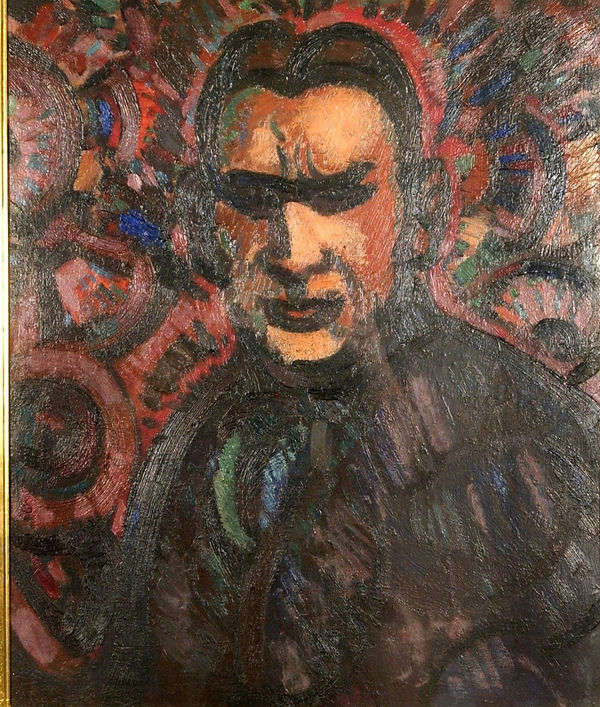
Fergusson
Self Portrait
1907

Fergusson
Pam
1910

Fergusson
Red Shawl
1908

Fergusson
Rhythm
1911

Fergusson
Portsmouth Docks
1918

Fergusson
In Glen Isla
1923

Fergusson
Bathers, Noon
1937

Fergusson
A Bridge on the Kelvin
1942

Fergusson
Poise

Fergusson
At The Dressing Table

Fergusson
The Branches
1928

Fergusson
Two Nudes

Nudes in a wood, Cap dAntibes by John Duncan Fergusson

Fergusson
Les Eus, 1910
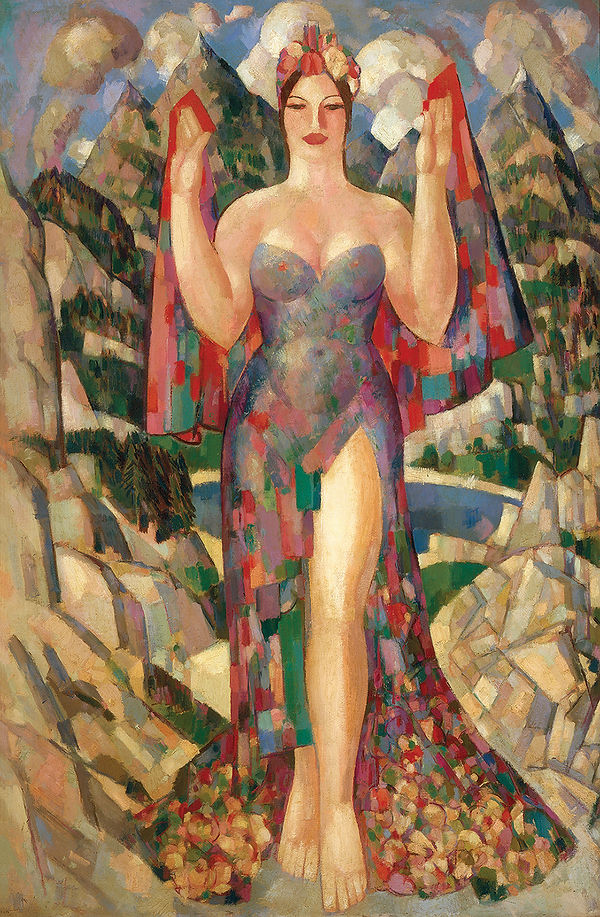
Fergusson, ‘Danu, Mother of the Gods’, 1952

Blonde with Checked Sundress
John Duncan Fergusson (1874–1961)

Bathers in Green
John Duncan Fergusson (1874–1961)

Siesta
John Duncan Fergusson (1874–1961)

In the Patio: Margaret Morris Fergusson 1925
John Duncan Fergusson

Megevian
1931
John Duncan Fergusson
Albert Marquet
1875 – 1947

Self-Portrait Albert Marquet (1904)
Albert Marquet
(27 March 1875 – 14 June 1947) was a French painter, associated with the Fauvist movement. He initially became one of the Fauve painters and a lifelong friend of Henri Matisse. Marquet subsequently painted in a more naturalistic style, primarily landscapes, but also several portraits and, between 1910 and 1914, several female nude paintings.
Marquet was born in 1875 in Bordeaux. In 1890 he moved to Paris to attend the École des Arts Decoratifs, where he met Henri Matisse. They were roommates for a time, and they influenced each other's work. Marquet began studies in 1892 at the École des Beaux-Arts under Gustave Moreau, a symbolist artist who was a follower of the Romantic tradition of Eugène Delacroix.
In these years, Marquet exhibited paintings at the Salon des Indépendants. Although he did not sell many paintings, the artistic community of Paris became aware of his work. His early compositions were characterised by a clear and painterly Fauvist approach, in which he had a fine control of the drawing and responded to light, not only by intensifying the strongest tones, but also by seeing the weaker ones in coloristic terms. Marquet and Matisse were already painting together in pure colors, as far back as 1898 in the Arcueil and at the Luxembourg Gardens, in what was later to be called the Fauve style.
In 1905 he exhibited at the Salon d'Automne where his paintings were put together with those of Henri Matisse, Maurice de Vlaminck, André Derain, Othon Friesz, Georges Rouault, Raoul Dufy, Henri Manguin, Georges Braque, Louis Valtat, Georges Dufrénoy and Jean Puy. He became a lifelong friend of Matisse.
Dismayed by the intense coloration in these paintings, critics reacted by naming the artists the "Fauves", i.e. the wild beasts. Although Marquet painted with the fauves for years, he used less bright and violent colours than the others, and emphasized less intense tones made by mixing complementaries, thus always as colors and never as grays.
Marquet subsequently painted in a more naturalistic style, primarily landscapes.

Girl Embroidering, Seated in a Garden
Albert Marquet
1896

Life Class at the École des Beaux-Arts (Fauvist Nude)
Albert Marquet
1898

The Apse of Notre Dame
Albert Marquet
1901

Harbor of Menton
Albert Marquet
1905

The Artist's Mother
Albert Marquet
1906

The Port, Le Havre
Albert Marquet
1906

Nude on a Divan
Albert Marquet
1912

Nude on a Blue Background
Albert Marquet
1913

A Horse in Marseille
Albert Marquet
1916

The Blonde Woman
Albert Marquet
1919
Maurice de Vlaminck
1876 - 1958

Maurice de Vlaminck
(4 April 1876 – 11 October 1958) was a French painter. Along with André Derain and Henri Matisse, he is considered one of the principal figures in the Fauve movement, a group of modern artists who from 1904 to 1908 were united in their use of intense colour. Vlaminck was one of the Fauves at the controversial Salon d'Automne exhibition of 1905.

Vlaminck, Self-Portrait.

Maurice de Vlaminck, The Seine at Chatou, 1906

Maurice de Vlaminck, Town on the Bank of a Lake, c.1909

Maurice de Vlaminck, The Bar
1900

Maurice de Vlaminck, Nude
1905

Maurice de Vlaminck, Maurice de Vlaminck Dancer from the Rat Mort
1906

Maurice de Vlaminck, Die Tanzerin aus der "Toten Ratte"
1906

Maurice de Vlaminck, Town
1909

Maurice de Vlaminck, Landschaft

Maurice de Vlaminck, The Woman with Necklace Red Background

Maurice de Vlaminck, Frau Kees in Einem Schwarzen Hut